The best Dutch varieties and hybrids of white cabbage
Holland is one of the leaders in world selection. Its seed production tradition goes back over 250 years. Local vegetable crops have proven themselves well, including in our country. They are unpretentious in care and are adapted to unfavorable climatic conditions, while the yield of the "Dutch" is much higher than Russian counterparts. Dutch white cabbage seeds are no exception. Consider the best varieties and hybrids of this culture.
The content of the article
Dutch white cabbage varieties and hybrids
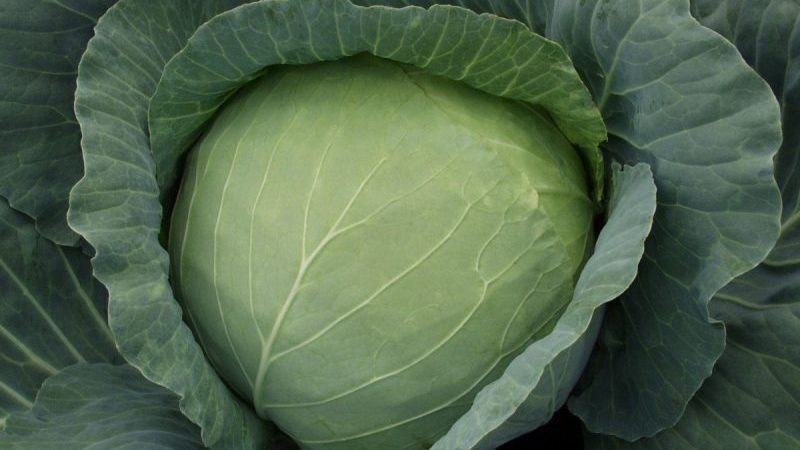
Depending on the ripening period, varieties and hybrids of white cabbage are divided into:
- late maturing - 130-170 days and more from the moment of planting seedlings in the ground;
- mid-season - 75-130 days;
- early maturing - less than 75 days.
In order to have cabbage on the table like from the garden throughout the season, as well as to stock it up for the winter, both early, and medium, and late varieties are planted with a 2-week interval.
Late
Late hybrids from Holland have a dense, crunchy texture that allows them to be stored for a long time without preservation.
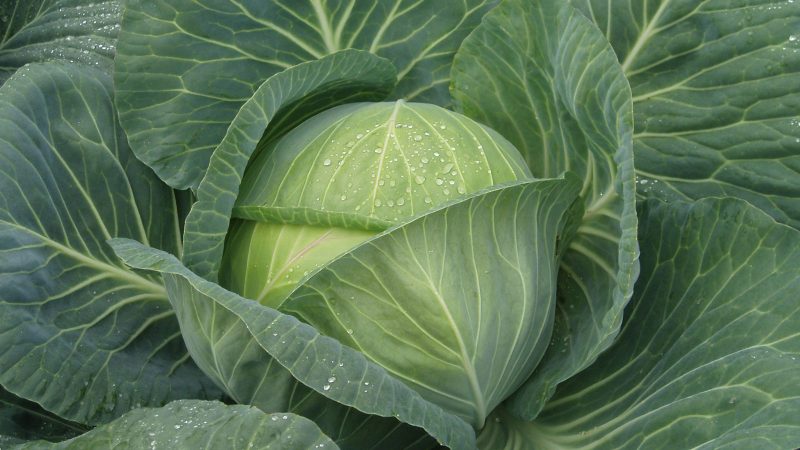
Bartolo F1
This popular hybrid matures in an average of 170 days. Productivity - 3.8-5.9 kg / m². At the exit, small, slightly elongated, gray-green heads of cabbage weighing up to 3 kg are obtained. Leaves are dense, concave, covered with a waxy bloom. In the context, the cabbage is white, the stalk is short or medium.
The hybrid is resistant to diseases such as mucous and vascular bacteriosis and gray rot, but it is susceptible to fusarium and is often affected by the cabbage fly.
Bartolo can be stored until the next harvest. Due to its excellent taste, this cabbage is used both fresh and for fermentation.
Fundaxi F1
The culture is planted in open ground with seedlings in mid-May... The biological ripeness of the fork reaches 128-138 days after the appearance of the first seedlings. The heads grow impressive, weighing 7-8 kg. The yield of the hybrid reaches 7 kg per 1 m².
Heads of cabbage are dense, not prone to cracking, stored in a cool room for up to 7-8 months. They steadfastly carry transportation over long distances without being damaged mechanically.
The hybrid has a strong immunity to fusarium wilt and is not affected by thrips. Among the disadvantages is the need for frequent watering and feeding.
Galaxy F1
The hybrid was bred in the Netherlands in 1990 and initially zoned in the Central and Volga-Vyatka regions of Russia. However, later, due to the ability to adapt to different temperatures, it began to be cultivated throughout the territory of our country.
The total yield of Galaxy from 1 m² of land varies from 4 to 6.5 kg. Cirro-dissected leaf plates tightly fit the stump, forming a rounded head of cabbage weighing 3.5-5 kg. Due to its beautiful appearance and excellent taste, this hybrid has a high market value and is often grown on an industrial scale. Stored up to 1 year.
The plant is tolerant to fungal diseases and thrips attacks.
Mid-season
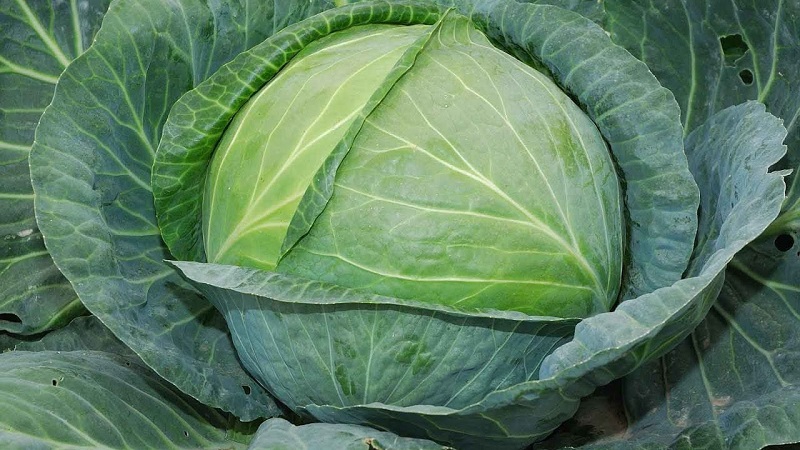
Such varieties and hybrids ripen quickly, but are not stored for a long time raw without conservation.
Larsia F1
Seedlings of the Larsia hybrid are transferred to open ground in May, and in September - October the first crop appears. If the garden is located in a lowland, the seedlings are planted on the ridge. The culture is sown according to the scheme 70 × 70 cm. Periodically, the beds are spud so that the heads of cabbage do not fall to one side.From 1 hectare of land, 300-550 centners of cabbage are harvested.
The mass of the head is about 5 kg. The fruits are light green outside, white inside. Medium leaf rosette. The shelf life of this subspecies is about 2 months.
The hybrid is resistant to bacteriosis, but it can get sick with downy mildew.
Important! To prevent powdery mildew, the soil is disinfected with fungicides before planting. It is not recommended to plant this cabbage in areas where cruciferous plants have already grown.
Krautkaiser F1
The time period from full germination to the technical maturity of the Krautkaiser hybrid takes about 120 days. The average head of such a cabbage weighs 4 kg and has a flat-round shape with a large number of leaves covered with folds and wrinkles. The outer stump is very short, because of this, the plant is spud only once per growing season.
The yield is high - 6-13 kg / m². Taste properties are assessed as excellent. The vegetable is used for making borscht, pies, hodgepodge, salads.
The culture is not afraid of gray rot and bacterioses, but keela is a real danger to it, so the hybrid is not recommended for acidic soils.
Rinda F1
The culture is very light-loving, so the place for its planting should not be shaded by trees, shrubs or a fence, otherwise Rinda will not tie leaves into heads of cabbage. The harvest appears in 85-90 days from the moment of germination or disembarkation of seedlings (both planting methods are permissible), however, the full ripeness of the heads of cabbage is achieved after 120-130 days.
The hybrid bears fruit with spherical heads of pale green color, each weighing 3-7 kg. Productivity - 10 kg / m². Fresh storage period is 4-5 months. The leaves of the plant are thin and elastic, which is especially convenient when preparing stuffed cabbage.
Early
Early varieties of white cabbage ripen very quickly, but they also have disadvantages - they do not have resistance to cracking and long keeping quality.
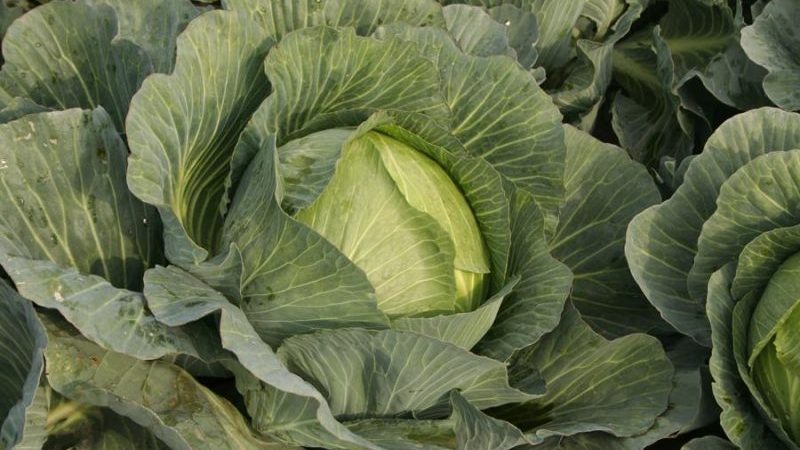
Mirror F1
The growing season of this hybrid is only 45-50 days - it is one of the earliest. The forks grow small, weighing about 1.5 kg. They have a sweetish taste due to the high content of vegetable sugars. However, doctors recommend this cabbage for dietary and baby food. Mirror, like all early ripening ones, is not stored for a long time, it is better to immediately use it in a salad.
The hybrid is resistant to temperature changes and in all weather conditions gives a high yield - up to 12 kg / m². However, there is a great risk of infection of ripening vegetables with insect pests: aphids, sacral flea, leaf beetle. Spraying with a mixture of ash and tobacco will help to combat them.
Parel F1
Parel cabbage is rich in vitamin C and minerals. The best way to consume it is raw... Heads of cabbage are neat, round heads weighing 1-2 kg. The soft stalk is also edible.
Subject to the growing conditions, the hybrid gives a stable annual yield of 5-6 kg / m². Care includes periodic loosening of the soil, removal of weeds, regular watering, fertilizing with nitrogen-phosphorus fertilizers. Seeds or seedlings of Parel cabbage are sown not only in open ground, but also in a greenhouse or greenhouse, providing an earlier harvest. The total growing season is 60 days.
Farao F1
This unpretentious hybrid is able to survive both drought and heavy rains and give a high yield - 2-4 kg / m² - even on poor soils. The ripening period of vegetables is 63-65 days from the moment the first shoots appear.
Heads of cabbage weight - 2-3 kg. They have a dense, slightly watery structure and a bright green uniform color. Slightly bubbly leaves adhere tightly to a short stump, giving the forks a round, smooth shape.
Unlike other early hybrids, Farao is stored for up to six months without losing its presentation, so they are often stocked up for the winter or frozen for future use.
Read also:
Kilo-resistant varieties and hybrids of the Dutch selection
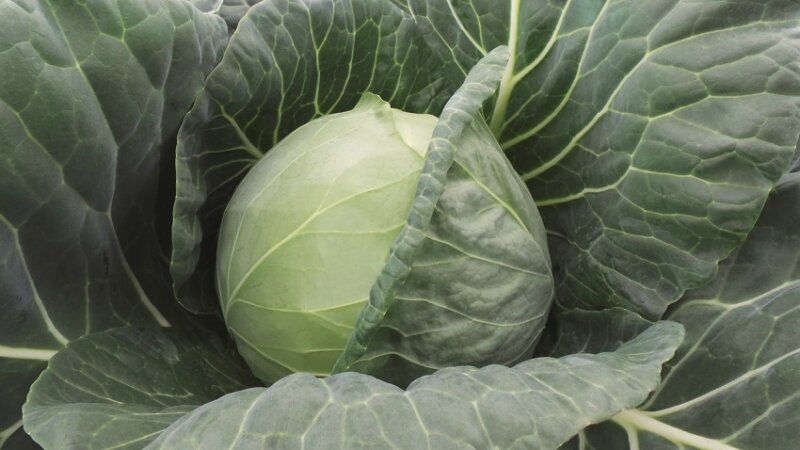
Kila cruciferous is a fungus that affects the root system of a plant and interferes with its full nutrition, as a result of which the fruits grow underdeveloped or die, and the soil is also infected for a long time. The reasons for the development of the fungus are the increased acidity of the soil and the violation of crop rotation. A valuable achievement of Dutch breeding is a number of hybrids that are resistant to this disease.
Tequila F1
This mid-season hybrid ripens in 85-90 days.... Heads of cabbage are round, weighing about 3 kg, covered with slightly bubbly medium-sized leaves, slightly wavy along the edge, with a strong waxy bloom. Internal stump of medium size. The density of the forks is 4.4 points out of 5. The commercial yield of the hybrid is about 6 kg / m².
With a relatively short growing season, Tequila can be stored for up to 4 months. Best for fresh consumption.
In addition to its ability to withstand keel, the hybrid is resistant to fusarium wilt and cracking.
Kilaton F1
Kilaton cabbage belongs to the late-ripening cabbage - the cabbage reaches technical maturity in 130-135 days. The yield is 300-600 c / ha.
The forks weigh 3-4 kg and can be stored for up to 7 months. This hybrid is suitable for canning and for cutting into salad. The heads, even after long-term storage in the cellar, do not lose their beautiful appearance, the leaves remain elastic and dense for a long time - 4.2 points out of 5.
Attention! The hybrid is resistant to keela, thrips, internal punctate necrosis, however, it is susceptible to peronosporosis, bacteriosis and white rust.
Best for storage
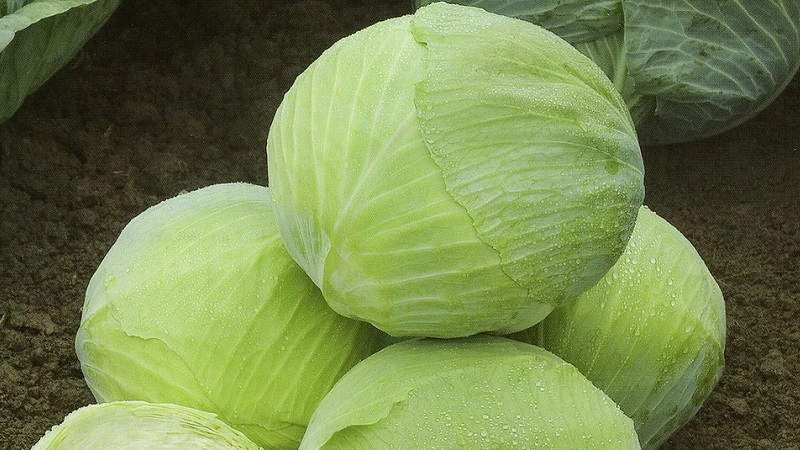
If you store cabbage planned for a long time, when planting, select varieties adapted for this.
Storema F1
The harvest is stored from autumn to spring. They keep the heads of cabbage in a dark, cool place, ideally in a cellar. Forks can also remain mature for a long time in the garden without cracking.
Sowing seeds or seedlings is carried out in open ground in late May - early April. The hybrid is resistant to spring frosts. When sowing, the soil should be drained and saturated with organic fertilizers.
Storema is a late-ripening hybrid with a ripening period of 130-160 days. An average head of cabbage weighs 5 kg, its upper leaves are gray-green, and the flesh is yellowish in the cut. 1 hectare of planting gives 540-900 centners of cabbage.
Hurricane F1
The harvest is stored until the new season... The forks ripen in 98-105 days from the moment the seedlings are planted. The culture is irrigated several times a week, periodically fed with nitrogen mixtures.
Hurricane is estimated as a high-yielding hybrid - 500-850 kg / ha. Heads of cabbage are kept on the vine for up to one month without loss of marketability.
Dense forks weighing 2-5 kg are suitable for fresh consumption, heat treatment and pickling.
Conclusion
White cabbage is a popular crop. There are many varieties and hybrids of this vegetable on the market. The hybrids bred in Holland are considered one of the best, since in the process of careful selection they retain the most valuable and useful properties of the parent varieties.